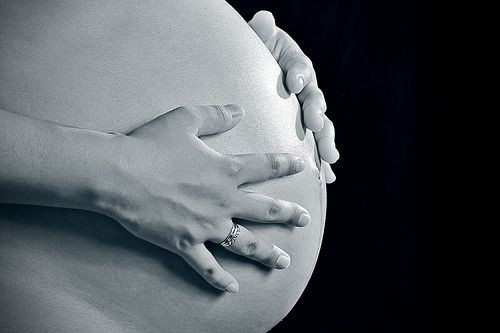Identical Triplets Born At 200 Million-To-1 Odds: Mother Told She Could Only Keep 1 Or 2

Karen Gilbert’s pregnancy began normally, until about eight weeks in. She started feeling pain and, thinking the worst, began fearing it was a miscarriage. But what Gilbert had originally mistaken for a failed pregnancy eventually became a wildly unlikely birth: identical triplets, the odds of which experts peg at between 60,000- and 200 million-to-one.
Doctors informed the Wales native that the root of her pain was each fetus’ fight for space and nourishment, as they all shared one placenta and one source of fluid. The cramped conditions led doctors to tell Gilbert, and her husband, Ian, that they would have to sacrifice at least one child to spare the others. Not willing to give up, Gilbert delivered all three via Cesarean two months early, on Aug. 2, successfully giving birth to identical triplets — Paige, Madison, and Ffion.
“The pregnancy has taken its toll but now I’m taking my time to recover and get to know my three beautiful girls,” Gilbert told the Daily Mail. “The doctors thought it could be up to three months before we could bring them home so we feel privileged to have them here with us.”
The couple was initially given the grim prognosis based off doctors’ observations of possible twin-to-twin transfusion syndrome (TTTS) — except in their case, it was triplet to triplet. Essentially, when an egg splits in two, and one of the eggs splits again, the resulting identical fetuses must occupy the same space and resources within the womb. The placenta, which delivers blood to each fetus, may deliver a disproportionate amount to one fetus over another. TTTS pregnancy carries a high mortality rate, up to 60 to 100 percent in severe cases.
“They all grew and fought so quickly it was practically ripping Karen’s muscles apart,” Ian Gilbert said. “But we couldn’t consider termination — they were our babies. We were scanned every week to make sure they were growing fine.”
Gilbert gave birth at the Royal Gwent Hospital in Newport, but got transferred back for antenatal care at Nevill Hall Hospital in Abergavenny.
A scary moment nearly threatened the pregnancy when Gilbert slipped at the top of the steps one day and fell all the way to the bottom.
“Our three-year-old daughter Faye was in bed and I was at work,” Ian said. “I came home to find Karen unconscious on the floor. I was petrified. I still can’t believe we made it through.”
As for the couple’s new challenges of raising triplets, they’ve already admitted the hardest one is telling each of them apart.
"We kept their hospital bands on for as long as they could but they grew out of them, so Ian had to buy more on eBay and we're still using them," Gilbert, who is on maternity leave from her job as an administration assistant, told the BBC. "They're that identical, it's scary. But their own personalities are starting to show.”



























